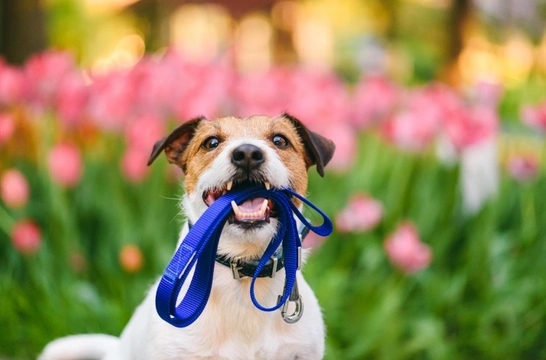
Is there a right and wrong way to hold your dog’s lead on walks?
Grabbing the lead, attaching it to your dog’s collar and heading out for a walk takes seconds and is something that dog owners do every day without paying much mind to things, and we all tend to hold the end of the dog’s lead for walks in the way that feels most natural, provides the control we want, and that works for the shape of the lead we are using.
However, how you hold your dog’s lead can have an impact on the level of feedback received by the dog, how much control you retain over them, and even how safe you are when out walking your dog as well.
If your dog pulls or lunges when on the lead or perhaps attempts to run off when the lead is in your hand, holding the lead in the wrong way can cause injury to your fingers and arm, and could even result in your dog pulling you off your feet in some cases too.
It is a good idea for all dog owners and prospective dog owners to learn and practice a safe, controlled way of holding their dog’s lead whilst maintaining the appropriate level of connection to the dog’s collar, and to learn why holding your dog’s lead in certain ways can potentially be dangerous.
In this article we will share information on the right and the wrong way to hold your dog’s lead when walking them, and some tips to make sure you hold the lead safely. Read on to learn more.
Incorrect and potentially dangerous ways to hold your dog’s lead
The vast majority of dog leads have a closed loop handle to put your hand through, and leads of this type are easier to keep hold of when walking your dog, and help to ensure that the lead isn’t pulled from your hand – if you use it properly.
Placing your hand through the loop itself is a good idea, but you shouldn’t wrap the loop and additional length of the lead around your hand, nor thread your fingers through the loop itself so that the pressures is exerted on and between your fingers rather than across the broader part of the palm and the strongest part of your grip.
If you wind or wrap your dog’s lead around your hand, this might seem like a fool proof way to ensure that your dog won’t be able to pull the lead free of your hand, but this can be potentially dangerous.
Should your dog yank or lunge on the lead when it is wrapped around your hand, it will quickly tighten around your hand and risk causing a crush injury and potentially, damage to your individual digits that can be painful and difficult to treat, and which may result in a long-term injury that might never heal properly and regain full functionality.
Additionally, if your dog’s lead is wrapped around your hand or otherwise set up in such a way that you could not drop it without first having to untangle it, if your dog bolts or yanks on the leash (particularly if your dog is large or powerful) they could pull you off your feet entirely, again, risking injury.
Further, failing to use the hand loop on your lead, or using a lead without a loop can increase the risk of you getting a friction burn to your hand, as the rope, leather or material of the leash will be pulled through your grip quickly, and may damage the skin it abrades in the process.
Safe, correct ways to hold your dog’s lead
As long as you use the hand loop on your lead but never wrap the loop or length of the lead around your hand, the chances of your becoming injured or running into problems due to the way you hold the lead when walking your dog are greatly reduced.
The best way to hold your dog’s lead in such a way that is both safe and provides the appropriate level of control over the dog is to keep a firm but not tense grip with your hand (palm and four fingers) inside of the loop itself, and your thumb providing a check and control on the outside of the loop, so that a gentle pressure serves to tighten your grip and provide feedback to rein your dog in.
If you need to bring your dog in closer to you and take up the slack on the lead, again, never be tempted to wrap the lead around your hand. Instead, fold the lead along its length until it is as short as you’d like it to be, and hold the loops in your closed hand, once more, ensuring that your hand is not within the loops and so, in danger of becoming trapped if your dog suddenly pulls on the lead.
Additionally, try to choose a lead made of a smooth and non-abrasive material, and replace it regularly if it becomes worn or damaged. You may also wish to wear thin gloves when walking your dog, not just to protect your hands from the elements, but to protect them from chafing or friction burns that can develop over time simply from repeatedly rubbing against the lead itself.



